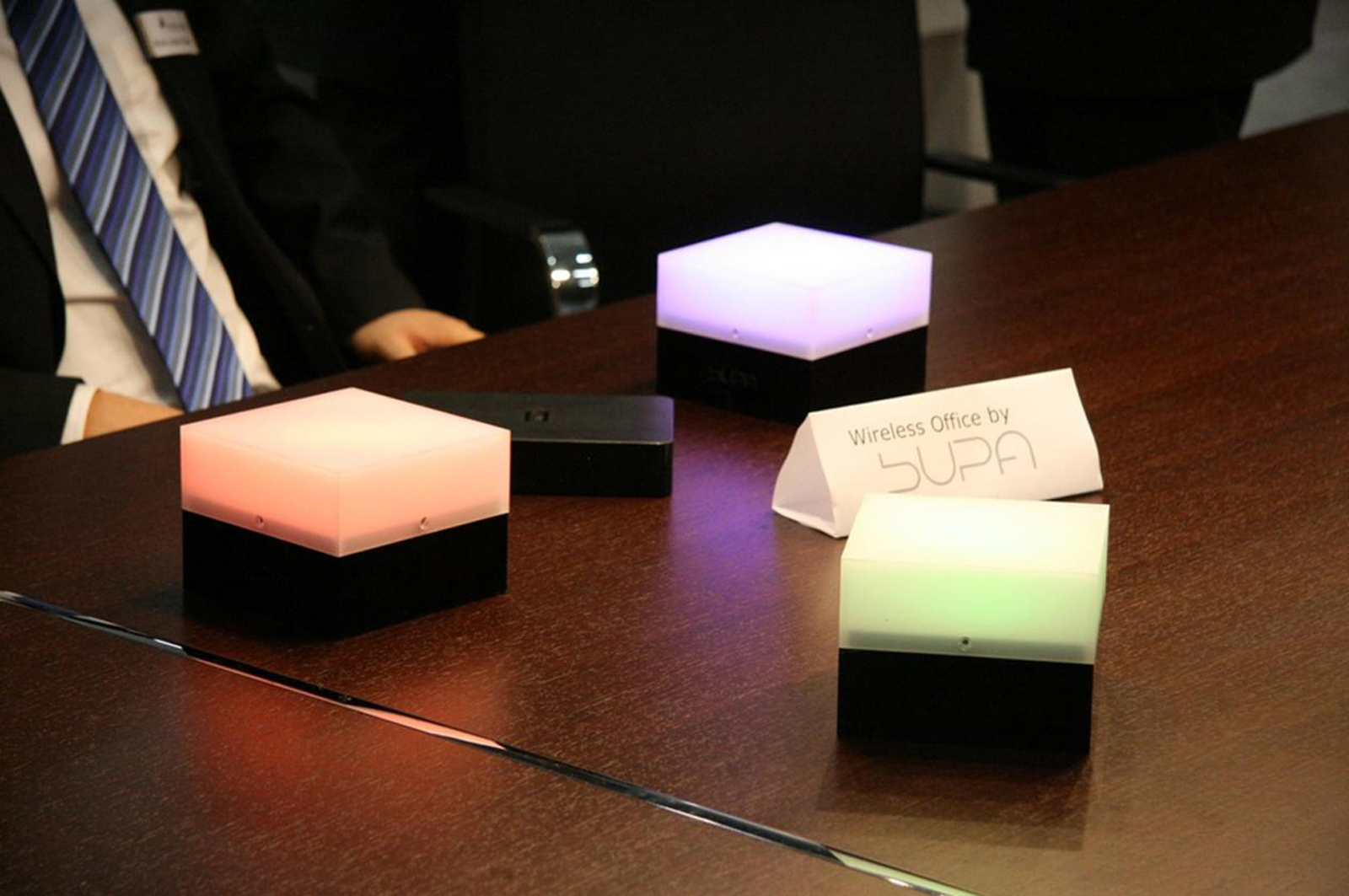In with antennas, out with cables
An eyesore and a tripping hazard in one: cable clutter is a real nuisance. Now a new kind of antenna is set to banish the pest, hidden in tables and supplying electronic devices with power. The “tables” can transmit data, too.
The pretty designer lamp on the table is meant to add charm to the room. If only the annoying cord wasn’t there, then you could also put the lamp in the center of the table when it suited you. In future, you will be able to do just that thanks to SUPA Wireless technology. SUPA stands for Smart Universal Power Antenna, and the technology removes the need for electric cables, whether for lamps, laptops or smartphones. Researchers at the Fraunhofer Institute for Electronic Nano Systems ENAS have developed SUPA Wireless together with colleagues at the University of Paderborn and four medium-sized technology companies. “Without cables, you can put your lamps anywhere you like on the table – and they look better to boot,” says Dr. Christian Hedayat, department head at Fraunhofer ENAS in Paderborn.
But if there are no cables and no batteries, where does the lamp get its electricity from? The principle is similar to that of an induction cooker: fitted in the table is a network of coils, each of which represents one transmitting antenna. If electricity flows through these coils, they generate a magnetic field. This in turn induces electricity into the coil fitted in the lamp, which lights up. However, the researchers were not satisfied with the lamp being supplied with electricity only at a specific point on the table: they wanted it to work anywhere on the tabletop. But this means that a magnetic field has to be generated wherever electricity is required – in other words, on the whole table. One solution would be to install a giant coil in the table, although this would not be very practicable. The researchers opted for a different route: “We populate a printed circuit board (PCB) with numerous antennas in such a way that a magnetic field is generated only under the surface of the receiver. The distances between the antennas and the dimensions of them are carefully chosen to produce a homogeneous field,” says Hedayat.
Cordless lamps available from late 2014
The researchers have also come up with a clever solution to ensure that radiation levels are not excessive: only the antennas fitted directly beneath where the receiver is standing are switched on; all the rest stay switched off. But how does the system recognize where the lamp is standing? “There are two approaches: a physical one and a numerical one,” reveals Hedayat. The physical approach is based on the fact that the antennas perceive the receiver – that is, the lamp – as a specific load. The scientists exploit this electrical “signature”. The researchers are currently working on the numerical approach: the antenna “speaks” with the receiver, asks for its identification, and then inquires whether it is entitled to receive energy. The researchers also plan to make the question of how much energy the lamp needs part of the “conversation”. In order to further reduce radiation, the scientists have restricted it to a very short transmission range above the table. That is enough to power common electronic devices such as cellphones and tablet computers. The final development phase is currently beginning. Now it is a matter of getting the technology market-ready. According to the researchers’ targets, the first application to be launched will be the lamp including PCB in late 2014. The PCBs will be supplied in various sizes so that customers can retrofit both small and large tables.
As well as cordlessly powering lamps, however, the system is also capable of powering laptops and smartphones etc. without any cables. For such devices, the researchers have built in an additional functionality. “We don’t transmit just energy through the table, but data too,” says Hedayat. And SUPA Wireless can also be integrated in medical applications, for instance to supply implants with energy. Take pressure sensors, which are implanted in the brain of stroke patients and set off an alarm when the brain pressure gets too high. Until now, these implants are usually powered by batteries, and when the batteries were empty, surgery was needed to replace them. With the new technology, these operations become unnecessary – making life a little easier for patients.
